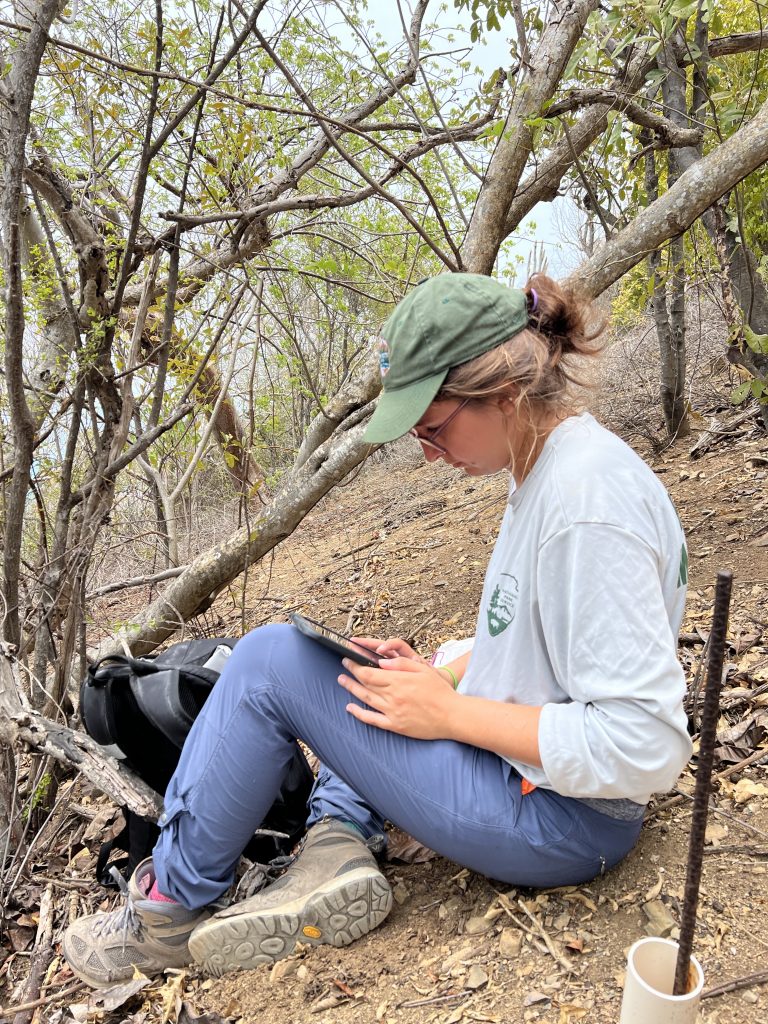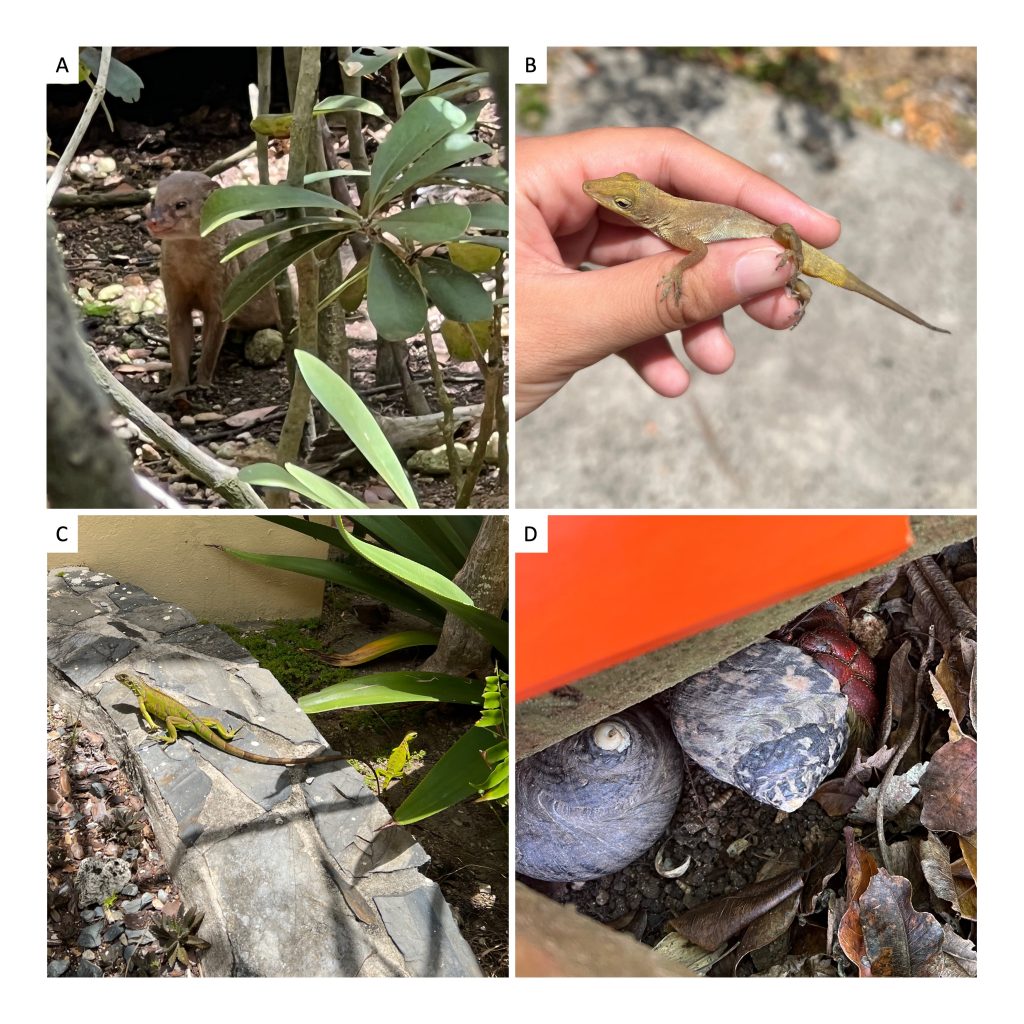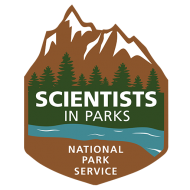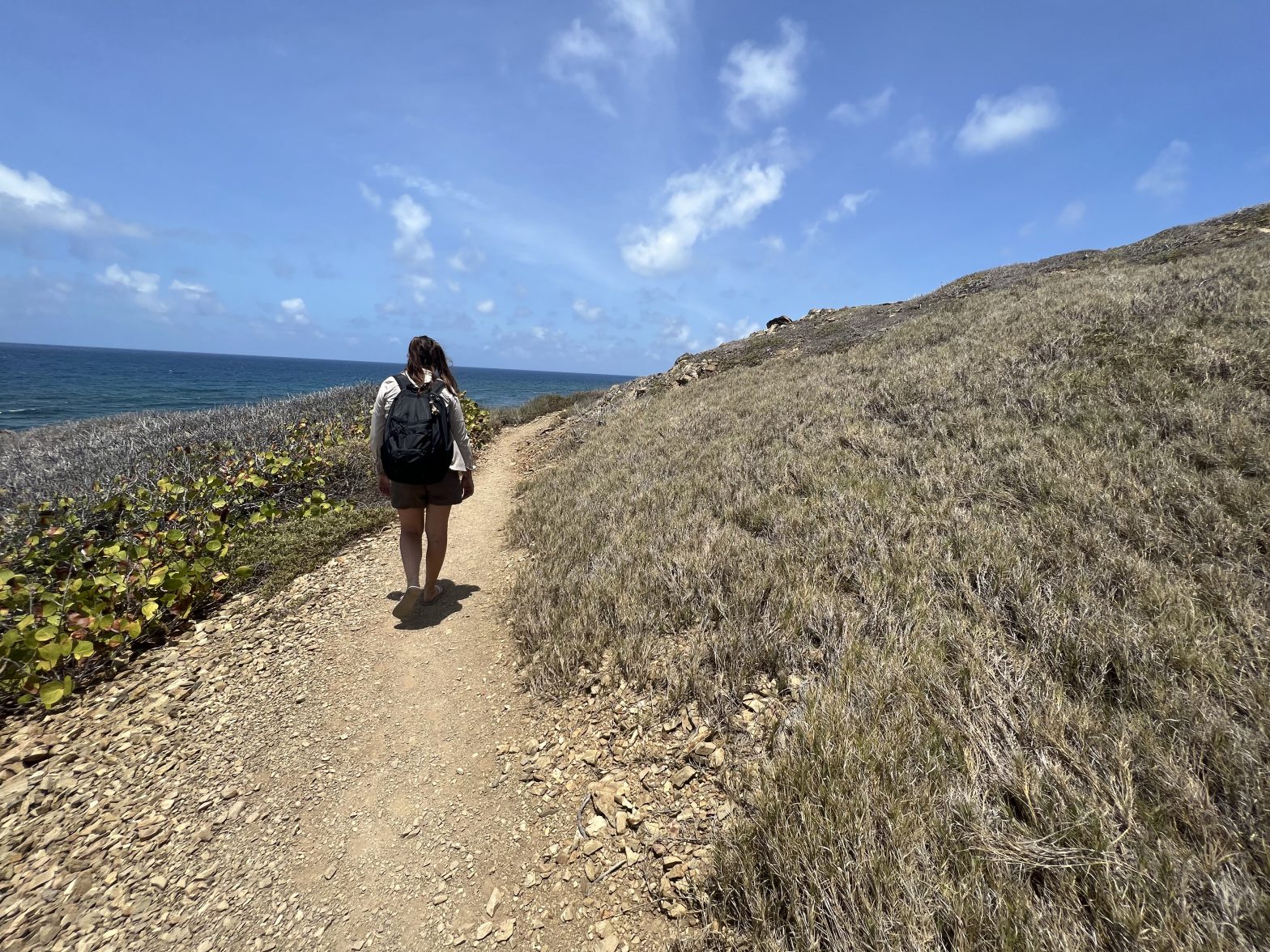My main roles as the SIP Fellow stationed at Buck Island Reef National Monument are to build a computer model of St. Croix Ground Lizard (Ameiva polops) distribution and abundance, lead outreach programs regarding the lizard, and assist with other NPS projects such as working at their native plant nursery, taking soil measurements, and patrolling for nesting sea turtle activity. But these aren’t my only goals while living in St. Croix! I am also a PhD student studying ecology and have been using this opportunity to develop my dissertation project which will continue research on the St. Croix Ground Lizard.

Photo credit: Steven Witkin
So how does a budding field biologist create this type of project? It is certainly a daunting task as my PhD will take the next four or so years and my chosen project will likely affect my future research career. However, this is also a very exciting time because I have the chance to create my ideal research project and develop into the scientist I want to be.
To generate ideas, I read relevant research papers, discuss with other scientists, and spend time in the field observing the animals and their habitat. Following advice from my advisor, I record my observations, activities, and people I meet in my field journal and write on average one research question per day. This helps me remember what and when various activities occurred and allows me to track my progress over time. I am also able to organize my project ideas so they can be consolidated into fewer, more concrete research directions. By using this approach, I learned that I am much more interested in direct interactions between species than I am in other types of interactions, such as those between the lizards and their physical environment.

Once I have a research question and trajectory, the next step is to figure out the methods I want to use to collect my data. This part is trickier as I must consider not only my interests, but feasibility in time, personnel, resources, and funding. Some ideas may seem really cool in theory, but if they would take many years to generate results or would cost a million dollars, they are well outside my limitations. Reading previously conducted studies and discussing with more experienced scientists is key to developing robust and practical methodology.
My next steps are to apply for grant funding over the next few months, then eventually to collect and analyze data to produce research publications in scientific journals. This process will be long but will (hopefully) lead to some exciting scientific discoveries! My SIP internship this summer has so far been instrumental in shaping my scientific thinking as well as given me much-needed experience working with my study organism and on the beautiful islands of St. Croix.

